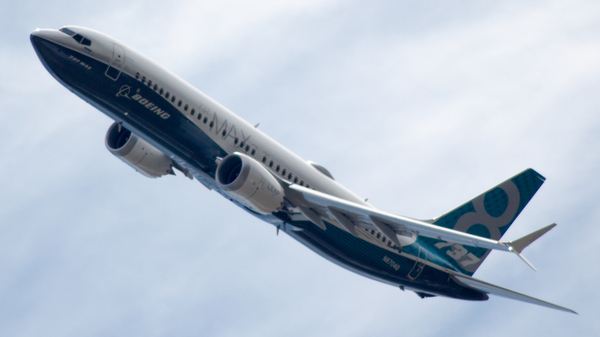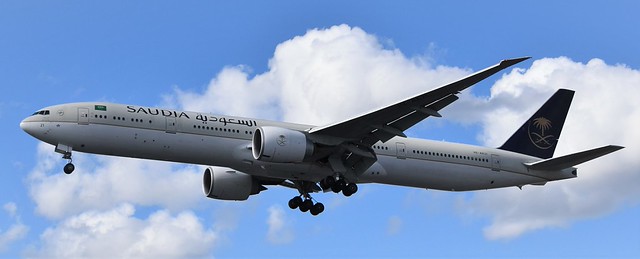Jazz DH8C at Gaspe on Sep 10th 2012, hard landing and tailstrike
Last Update: August 7, 2014 / 15:41:43 GMT/Zulu time
Incident Facts
Date of incident
Sep 10, 2012
Classification
Report
Cause
Hard landing
Airline
Jazz Aviation
Flight number
QK-8721
Departure
Iles De La Madeleine, Canada
Destination
Gaspe, Canada
Aircraft Registration
C-GUON
Aircraft Type
De Havilland Dash 8 (300)
ICAO Type Designator
DH8C
Canada's Transportation Safety Board (TSB) released their final report concluding the probable causes of the accident was:
Findings as to causes and contributing factors
- The application of a pronounced nose-up control to reduce the rate of descent resulted in a nose-high attitude. This attitude, combined with a hard landing that compressed the oleos, resulted in the aft part of the fuselage striking the runway, causing significant damage to the aircraft structure.
- The pilot monitoring was focusing attention outside and did not identify the loss of energy in time to notify the pilot flying or to intervene and thereby prevent the hard landing.
- The aircraft crossed the runway threshold with insufficient energy to stop the rate of descent with only an increase in the nose-up attitude at the time of the flare.
- The crew had not received training on the technique recommended by the manufacturer in the event of a higher than normal rate of descent near the ground. As a result, the pilot flying did not limit the nose-up attitude or increase power to reduce the rate of descent, and the aircraft fuselage struck the runway.
Findings as to risk
- If pilots descend below the optimum approach slope of 3°, there is an increased risk of collision with obstacles during the approach and of landing short of the runway.
- If pilots follow the DH8C SOP precisely when executing a short field landing, the aircraft will pass the threshold of the runway in a low energy state, and be at risk of a hard landing or a hard landing with an aft fuselage strike.
- If pilots adapt the DH8C short field landing SOP to avoid a steep approach in a low energy state by aiming to land close to the threshold while on the usual 3° slope, they are at risk of landing short of the runway.
- If crews do not possess adequate knowledge of the limits of the different visual glideslope indicators, they may continue to follow visual guidance that does not guarantee sufficient clearance above the threshold, increasing the risk of landing short of the runway.
- If pilots do not have direct access to eye-to-wheel height data, they may continue to perform approaches with a visual glideslope indicator that is not appropriate for the type of aircraft flown, increasing the risk of crossing the runway threshold with a reduced safety margin.
- If cockpit voice recordings are not available to an investigation, this may preclude the identification and communication of safety deficiencies to advance transportation safety.
- If stabilized approach criteria do not specify an acceptable speed range, there may be confusion during a critical stage of the flight, increasing the risk of an approach and landing accident.
Other findings
- The use of image (video) recording systems that would include imaging within the cockpit would increase transportation safety by providing investigators with a reliable and objective means of determining what happened.
While enroute at 14,000 feet the crew received clearance for a contact approach to Gaspe's runway 29, the crew subsequently initiated the descent and approach to Gaspe. The first officer (ATPL, 4,500 hours total) was pilot flying, the captain (ATPL, 11,700 hours total) was pilot monitoring. The aircraft intercepted final approach about 5.5nm before touchdown at 2400 feet above aerodrome level (AAL) and 138 KIAS. The aircraft subsequently descended to an optimal 3 degrees glidepath and continued to descend below the glide path until at about 170 feet AAL all 4 PAPIs indicated red. The pilot flying reduced power, the rate of descent increased even more, at 70 feet AAL, about 700 feet short of the runway threshold, the power was reduced to idle, the airspeed reduced to Vref+3. Tyre marks indicate the aircraft touched down first 109 feet past the runway threshold, the tail contacted the runway surface. The aircraft rolled out, backtracked the runway and taxied to the apron.
The crew inspected the damage and reported their observations to dispatch. As a precaution passengers, who felt pain at the moment of impact, were asked whether they would like medical examination, 8 passengers went to see the doctor but all returned to continue their flight with a later aircraft.
The TSB analysed that the aircraft reached the upper limit of the PAPIs (all 4 lights white) about 3.5nm before the runway threshold at 1300 feet AAL and 130 KIAS, about 1.5nm before the runway threshold at 500 feet AAL the aircraft reached the optimum glidepath at 119 KIAS (Vref+16). The aircraft continued to descend below the glidepath until reaching the lower limit of the PAPIs (all 4 lights red) 0.5nm before the runway threshold at 170 feet AAL and 115 KIAS. At 45 feet AAL the power reduction began, the aircraft was 700 feet before the runway threshold at 106 KIAS (Vref+3). The aircraft crossed the runway threshold at 100 KIAS (Vref-3), the aircraft pitched up to 5 degrees nose up. The aircraft touched down hard at 98 KIAS, 0.03 seconds after the main wheels touched down the tail contacted the runway surface when the pitch increased through 7 degrees nose up, the aircraft experienced a vertical acceleration of +3.4G.
The TSB analysed: "The approach and landing occurred in visual meteorological conditions, and there is no indication that they were a factor in this occurrence. All of the aircraft's systems were operating normally."
The TSB analysed: "During the occurrence flight, the crew was not using the SOP short-field landing procedure, nor was the landing in CYGP considered as requiring this procedure. The occurrence approach was performed in the normal landing configuration (flaps 15), with a descent below the 3° descent path using an aiming point closer to the threshold."
With regards to cockpit resource management as well as the lack of response by the captain the TSB analysed:
"Effective crew resource management requires that pilots agree on a common plan for the approach and landing, and generally the approach briefing serves this purpose. Given the lack of CVR data, it was not possible to evaluate the interaction between crew members during the approach.
The PF was focusing attention outside to land on the aiming point and did not notice the aircraft’s energy deficit. During this time, the PM was also concentrating outside and did not detect the reduction in energy on short final approach in time to react.
The pilot-in-command had never had to intervene by taking the controls during co-pilot landings. The co-pilot had considerable flight experience and had shown full command of the aircraft during flights the day before. These positive experiences could have influenced the level of alertness and, consequently, the reaction time of the pilot-in-command in the role of PM."
Incident Facts
Date of incident
Sep 10, 2012
Classification
Report
Cause
Hard landing
Airline
Jazz Aviation
Flight number
QK-8721
Departure
Iles De La Madeleine, Canada
Destination
Gaspe, Canada
Aircraft Registration
C-GUON
Aircraft Type
De Havilland Dash 8 (300)
ICAO Type Designator
DH8C
This article is published under license from Avherald.com. © of text by Avherald.com.
Article source
You can read 2 more free articles without a subscription.
Subscribe now and continue reading without any limits!
Read unlimited articles and receive our daily update briefing. Gain better insights into what is happening in commercial aviation safety.
Send tip
Support AeroInside by sending a small tip amount.
Related articles
Jazz DH8C at Castlegar on Jul 30th 2016, near collision with business jet below radar altitude
A Jazz de Havilland Dash 8-300, registration C-GUON performing flight QK-8474 from Castlegar,BC to Calgary,AB (Canada), was climbing out of Castlegar…
Jazz DH8C at Calgary on Apr 17th 2014, engine flamed out and restarted
A Jazz de Havilland Dash 8-300, registration C-GUON performing flight QK-8168 from Calgary,AB to Edmonton,AB (Canada) with 41 people on board, was…
Jazz DH8D at Calgary on Oct 6th 2023, departed over tugs on runway
A Jazz de Havilland Dash 8-400, registration C-GGNZ performing flight QK-7124 from Calgary,AB to Winnipeg,MB (Canada), was cleared for takeoff from…
Jazz DH8D at Vancouver on Feb 3rd 2025, tyre damage on departure
A Jazz de Havilland Dash 8-400, registration C-GGNZ performing flight QK-8441 from Vancouver,BC to Terrace,BC (Canada) with 72 passengers and 4 crew,…
Jazz CRJ9 at Chicago on Feb 1st 2025, lavatory fire indication on final approach
A Jazz Canadair CRJ-900, registration C-FJZN performing flight QK-901/AC-8901 from Toronto,ON (Canada) to Chicago O'Hare,IL (USA), was on final…
Jazz CRJ9 enroute on Oct 25th 2024, unreliable airspeed, stick shaker, stall fail
A Jazz Canadair CRJ-900, registration C-GLJZ performing flight QK-721 from Toronto,ON (Canada) to Minneapolis,MN (USA), was enroute at FL360 about…
Jazz CRJ9 and India B773 at Toronto on Sep 11th 2024, CRJ9 crossing runway with B773 accelerating for takeoff
A Jazz Canadair CRJ-900, registration C-GJHZ performing flight QK-931 from Philadelphia,PA (USA) to Toronto,ON (Canada), had landed on Toronto's…
Newest articles
Tway B38M enroute on Jan 10th 2026, power bank thermal runaway, 8 injuries
A Tway Air Boeing 737-8 MAX, registration HL8579 performing flight TW-634 from Sanya (China) to Cheongju (South Korea) with 32 passengers and 6 crew,…
Saudia B773 at Islamabad on Oct 14th 2024, landed on wrong runway
A Saudi Arabian Airlines Boeing 777-300, registration HZ-AK21 performing flight SV-724 from Riyadh (Saudi Arabia) to Islamabad (Pakistan) with 399…
Subscribe today
Are you researching aviation incidents? Get access to AeroInside Insights, unlimited read access and receive the daily newsletter.
Pick your plan and subscribePartner

ELITE Simulation Solutions is a leading global provider of Flight Simulation Training Devices, IFR training software as well as flight controls and related services. Find out more.
SafetyScan Pro provides streamlined access to thousands of aviation accident reports. Tailored for your safety management efforts. Book your demo today
AeroInside Blog
Popular aircraft
Airbus A320Boeing 737-800
Boeing 737-800 MAX
Popular airlines
American AirlinesUnited
Delta
Air Canada
Lufthansa
British Airways



